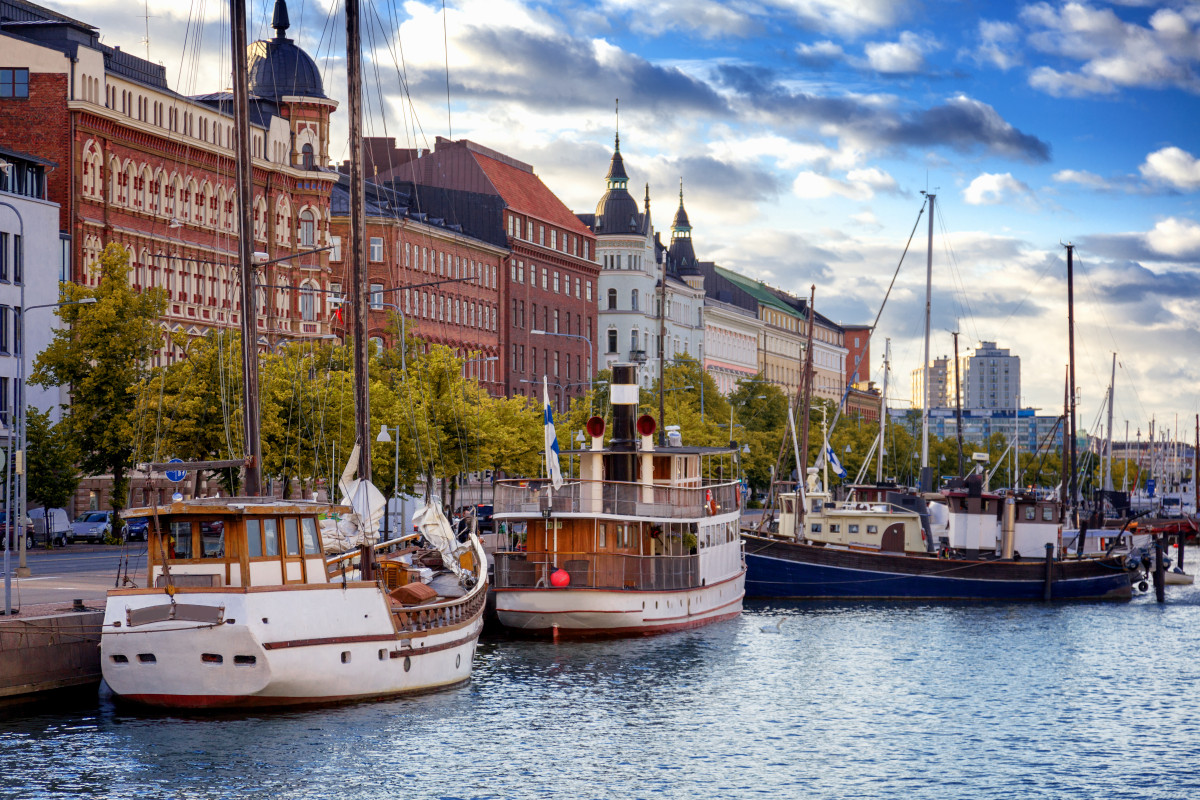Sights in Helsinki – a pocket-sized metropolis
The most beautiful daughter of the Baltic Sea, as the Finns like to call their capital, is not a world-class metropolis like Stockholm in neighboring Sweden. With its small city center and manageable size, lively and cosmopolitan Helsinki feels more like a pocket-sized metropolis.
Helsinki, the cosmopolitan capital
The city, which is surrounded by the sea on three sides and lies for the most part on a heavily rugged granite peninsula, has developed its identity in the area of tension between eastern and western cultures. Helsinki’s colorful history since the 16th century has left clear traces not only in the architecture, but also in the culture and the culinary, which is reflected in the cosmopolitanism of the residents.
Kauppatori: Helsinki’s bustling harborside marketplace
The lively and colorful “Kauppatori” is the heart of the city. The market is right on the quay walls of the southern harbor, where the ferries from Sweden dock. In addition to vegetables, fruit and fresh fish, Finnish handicrafts, Lapland sweaters and souvenirs are also sold here. In winter, when temperatures are below zero, the market takes place in the opposite market hall “Wanha Kauppahalli”, which dates back to the days of the Tsars.
Uppenski Cathedral: splendor of orthodoxy in Helsinki
To the east of the market, on a hill, is the largest orthodox church in western Europe. With its thirteen gilded domes and foreign architecture, the cathedral, built in 1868, stands out clearly from its surroundings and is one of the most visible manifestations of Russian influence in Finnish history. The walls and the picture wall of the iconostasis, which separates the sanctuary from the sanctuary, show the characteristic hand-painted images of saints of the Russian Orthodox faith.
Helsinki: Senate Square and Cathedral
The Senaatintori (Senate Square) and its surrounding buildings – the Cathedral, the Government Palace, the University and the National Library – form a unique neoclassical whole. The four buildings were designed in the years 1822-1852 by the Berlin architect and master builder Carl Ludwig Engel. The Cathedral (Tuomiokirkko), completed in 1852, is the most famous building in Finland.
Helsinki: Townhouse and Townhouse District
Carl Ludwig Engel redesigned the originally 18th-century quarter on the south side of Senate Square to give it a more unified look. Until the early 20th century, the Stadthausviertel was the center of the city’s trade and social life. The light blue building, which has served as a townhouse since the 1930s, was a hotel in the 19th century.
The shopping streets of Helsinki: Esplanadi and Havis Amanda
Between the magnificent shopping streets Pohjoisesplanadi and Eteläesplanadi (both briefly called Esplanadi), lies the narrow Esplanade Park, in which various events (concerts, theatre, festivals) take place from May to September. In the park there is a bandstand, the Swedish Theater, lots of benches and the bronze fountain Havis Amanda, a sculpture by Ville Vallgren. According to Vallgren, the figure of a maiden emerging from the sea, made in Paris in 1906, symbolizes the city of Helsinki and her birth.
Free travel and free entry with the Helsinki Card
Finland is expensive compared to other countries in the EU, but the Helsinki Card is a cheap way to explore the capital. The card offers an almost two-hour city tour, free travel on all public transport, free access to around sixty museums, discounts and other extras.
The card, which can be purchased at the Tourist Office at Pohjoisesplanadi 19, costs 35 euros for 24 hours, 45 euros for 48 hours and 55 euros for 72 hours. It costs nothing for children under the age of 7, and far less than half that for older children.
